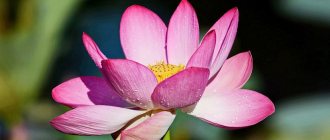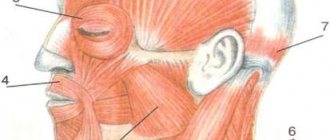- Reports
- The world
- Animals of the living corner
In the modern world, people spend less and less time in nature; only occasionally do they get out of stuffy apartments. Children especially suffer from continuous exposure to the urban environment; they do not receive fresh air, do not know what plants and animals look like, and do not understand how to care for them. To bring children closer to nature, broaden their horizons, develop certain skills and instill a love for the world around them, living corners with plants and animals began to be created everywhere in Russian schools. Of course, zoo corners with small animals are especially popular. What animals are kept in living corners?
There is a whole list of animals that are common in “green corners”.
- Hamsters are the most common animal in living areas; they are very active, love to run and climb. It is vital for these animals to have space or special equipment, because without special load they begin to gain weight, get sick and quickly die. The animals are clean, but you cannot bathe them; they clean themselves, without water. Hamsters eat plant seeds, fresh herbs, vegetables, fruits, cottage cheese; for ease of feeding, it is fashionable to use special food. But these animals need not only food, but also some objects (chalk, tree branches, a special mineral stone) to grind down the teeth that grow throughout their lives, otherwise they will gnaw the cage.
Disadvantage: they are awake in the evening and at night, therefore, it is inconvenient for children to observe their active phase of life.
- Guinea pigs are peaceful, funny, quiet animals. They live in a cage and eat grass, vegetables, hay, grain, and fruits.
Disadvantage: rapid reproduction, uncooperative males in the same cage.
- Aquarium fish are beautiful, bright, quiet pets. There are a huge number of species of aquarium fish, the conditions for keeping them are also different, and food is used to feed them. The most common aquarium fish are guppies, goldfish, and swordtails.
Disadvantage: Difficulty in caring for the aquarium.
- Turtles are unusual, silent, funny animals. They require enough space to move, depending on their size, and maintain a special microclimate. Turtles eat greens, fruits, vegetables, and love dandelions.
Disadvantage: hibernation when the temperature drops; they are easily lost because they often hide in secluded places.
- Parrots are beautiful, colorful pets that are easy to train. There are a huge number of species of parrots, but the most common in living areas are budgies. The diet of these birds is complex, so they mainly buy ready-made food.
Minus: the need for periodic release for flights, loud sounds made by parrots.
The most interesting inhabitants of the zoo were squirrels and hedgehogs, but it is very difficult to meet them there now, since they are difficult to care for. In addition, the rules for keeping animals in schools are constantly becoming stricter. At the moment, living corners are prohibited; in schools, you can only create a “living room”, but children cannot take care of animals in it, they can only observe. It turned out that the living corner lost its real purpose and turned into a “mini-zoo”.
2nd grade world around
1) What animals live in your home? How do you look after them?
I have two cats at home. Cats require a lot of attention and care. They need to be fed, given water, and the tray cleaned. Cats need to be bathed once a month and their fur brushed almost every day. In addition, you need to play a lot with cats, as they are very active animals.
2) If you have an aquarium in your classroom or school, identify the fish that live in it. Use the information from the identification atlas and prepare a report about them.
Message about aquarium fish for 2nd grade
Our school has an aquarium with live fish. Most of all there are multi-colored, brightly colored guppies, and almost completely black catfish.
Guppies are freshwater fish that are naturally found in South America, in the tributaries of the Amazon. This is a small, very active fish, unpretentious and cheerful. Guppies move in the water in schools and like to hide among algae.
Catfish is also a freshwater fish. There are many varieties of catfish, and in nature they are found in warm countries - in South America, India, Indochina. Catfish prefer to swim at the very bottom of the aquarium; they pick up food that has fallen to the bottom.
We have Gourami in our aquarium. These are beautiful golden fish with large fins and a tail. They swim leisurely. In nature, gouramis are found in the countries of South Asia.
Another beautiful aquarium fish is the macropod. It has a long tail, sharp fins and dark stripes along its body. Macropods can be red or blue. This fish also comes from Indochina.
And the last fish in our school aquarium is the swordtail. This is a very fast, nimble fish of green or brown color, which has a sword-like appendage next to its tail. The swordtail is native to Central America.
Other inhabitants of the living corner
In addition to the above pets, you can keep lizards, snakes, white mice, rats, squirrels, and rabbits. Guinea pigs also adapt easily to captivity. They eat everything they give (hay, bran, vegetables), but are picky about their living conditions. These rodents will not survive in damp or drafty areas as they are prone to disease.
Among the birds, parrots are a good choice. These are beautiful pets, they can live in a school corner for a decade or more, they tolerate captivity well and quickly get used to the conditions. Their friendly chirping, attempts to imitate speech, as well as curiosity and intelligence will delight children.
Interesting, unusual and funny photos of animals from around the world
A huge Bengal tiger behind the glass enclosure became interested in a little girl. Photographer Dirk Daniels says: “I noticed that the baby was very interested in the “big cats.” I couldn’t believe my eyes when the tiger, clearly interested, came up to the glass and placed its paw directly opposite the baby’s hand. She, however, wasn’t scared at all, she even clapped her hands with delight!”
Nine goats climbed a tree in search of delicious fruit. Photographer Gavin Oliver took this amazing photo near Todra Gorge, Morocco. He says: “The branches sagged under the weight of the animals. They climbed to heights that were incredible for them, trying to get to the fruit.”
Two-headed albino milk snake in Ridge Manor, Florida. Typically, the colors of snakes of this species combine orange and black. Daniel Parker, a biologist at the University of Florida, says that in captivity, two-headed snakes live up to twenty years.
It seems that this gray squirrel has seriously decided to become a musician. This amazing photo was taken by retired postal worker Kathy Pruyn in her garden in Tampa, Florida. Katie achieved this amazing effect by placing peanuts around a toy piano.
And in response to this photo, the squirrel seriously decided to master the game of billiards.
A rabbit takes on a hurdle during the European Rabbit Races in Wollerau, Switzerland.
A rabbit, one of the participants in the rabbit championship in Wollerau, Switzerland. Recently, rabbit racing has been gaining rapid popularity in Europe.
A male gorilla named Yakini is given anesthesia during medical procedures at Melbourne Zoo's veterinary clinic.
A turtle is surrounded by acanthurus fish that feed on algae growing on the surface of the turtle's shell. This photo was taken off the coast of Hawaii by photographer Masa Ushioda.
It seems as if a huge and very oppressive white shark is smiling at the camera lens. Photographer Mike Parry was standing only one and a half meters from the water when a huge predator emerged to the surface. This happened near Dyer Island, South Africa.
British photographer Steve Jones specializes in photographing whale sharks. The length of these giant predators can reach twelve meters
Bryde's striper surrounded by many small fish. The photo was taken by Doug Perin off the coast of Mexico.
Sulawesi black macaque with baby at Drussilas Park near Alfreestone, East Sussex.
Giant panda cubs at the Giant Panda Sanctuary in Chengdu, Sichuan Province, China.
A polar bear shakes off water at the St-Felicien Wildlife Zoo in Quebec City. Canada is home to approximately 15 thousand of a total polar bear population of 20 thousand. In addition, polar bears live in four more countries - America (Alaska), Russia, Greenland and Norway.
A polar bear dives into the water at the St-Felicien Wildlife Zoo in Quebec.
Four capybara cubs with their mother at a zoo in Schwerin, northeastern Germany.
Brenda and Don Hotch pose with several of the fourteen skunks that live in their Hudson, Florida home. The pets are named Spike, Inka, Sammy, Suna, Nutmeg, Chanel, Spencer, Theodore, Alvin, Simon, Frosty, Zipper, Napoleon and Da Vinci. Owners claim that skunks become even more attached to people than cats.
St. Bernard Holly and French bulldog Aoki at the Salty Paw dog restaurant in Manhattan, New York. Now your four-legged friend won’t have to be bored alone if you decide to go to a cafe for a sip of beer. An American company produces beer designed specifically for animals. Beer with the flavor of veal or chicken is called Bowser Beer, is non-alcoholic, and contains all the vitamins and minerals your pet needs. A good alternative to boring water in a drinking bowl!
Dogs in fancy dress take part in the Halloween Parade in Long Beach, Los Angeles.
A flock of sheep flees after spotting a fox in a field in Gretna, Scotland.
Glowing eyes of caimans peeking out of the water. Thirty-seven-year-old Daniel Fox took this amazing photo in Ituzaingo, Argentina.
A king penguin feeds a calf on South Georgia Island. Wildlife photographer Michael Nolan traveled to Antarctica specifically to photograph penguin colonies.
This is an amazingly rare black king penguin. they occur once in thirty thousand. They have increased dark pigmentation of the wings, skin and feathers, as a result of which the usual coloring is disrupted.
)))))))))))))))))))))))))))))))))))))))))))
Animals for a small home living corner
Achatina are giant land snails that feel quite good in small terrariums. They are perfect for those who cannot devote too much time to the animal - even if you leave Achatina for a long period without food, it will simply hibernate.
Despite their peculiar appearance, Achatina can become interesting specifically to women. These snails are used in cosmetology as an excellent means of softening and rejuvenating the skin - just let the pet crawl along your hand.
With proper care, Achatina can live up to 9 years; the snail's shell grows throughout its life and in some cases can reach 25 cm. Such a giant will have to be moved to a larger terrarium.
Eublepharis (gecko)
Pet size: up to 20 cm
Required area: 40x50x25 cm
The leopard gecko is considered one of the most popular types of geckos precisely due to the required conditions of detention. In a small terrarium, with the required level of lighting, temperature and humidity, it can easily live up to 20 years. Due to the bright spots all over the body, leopard geckos have a very attractive appearance. And when the gecko looks straight at you, it seems that his face breaks into a smile.
The only thing you will need to get used to is feeding with live insects. True, adult individuals eat only 1-2 times a week, so this task can easily be delegated to someone with stronger nerves.
Nanoaquarium
Pet size: from 1 cm
Required area: from 30x25x20 cm (10 l)
Nanoaquarium is a new direction in aquarium farming, which is only gaining popularity. The idea of compact aquariums had appeared before, but it was not easy to implement - insufficiently high-quality equipment did not allow maintaining a stable environment in such a small volume. Today, this problem has been solved; many nanoaquariums are even sold with everything they need.
The development of nanoaquariums was also influenced by the increased diversity of living creatures that will feel good in such a modest displacement. For fish, regular guppies and small Endler guppies, rasboras, neons and others are suitable. But the freshwater neocardina shrimp feel best in nanoaquariums. With them you can create a rather attractive living corner, because modern selection offers spectacularly colored forms - cherry “cherries”, striped “bees”, black, blue, scarlet and yellow species.
The maximum size of shrimp is 3 cm, so even in a small aquarium you can keep a flock of 10-15 pieces. Caring for these shrimp is easy, which means they are perfect for beginner aquarists.
Eco-farms, zoos, living areas: 7 places where you can see animals
Where can you take your children to see wildlife? Myslo has prepared for you a review of places in the Tula region and beyond where you can not only take a walk and enjoy the silence of the countryside, but also communicate with the cutest animals. Choose and go!
Ecopark “My Village”
www.ecovill.ru
Address: Tula region, Yasnogorsky district, Kuzmishchevo village.
How to get there:
Opening hours: daily from 08.00 to 18.00.
How much does it cost: visiting the zoo is free. There is a separate price for accommodation on the farm.
Gallery
show all photos
One hundred kilometers from Tula there is the eco-park “My Village”. You can come here, stay in a cozy wooden house and enjoy the calm life of the village. For the park's youngest guests, the owners have created a small but diverse petting zoo.
In summer, communication with animals occurs most closely. In open paddocks, camels and llamas, ostriches and donkeys are waiting to meet you. Silver fox and ferrets live in small enclosures. Cheerful guys, tame raccoons, happily extend their little hands and accept the treat, not forgetting to rinse it thoroughly.
And there is plenty of rural “exoticism” for young residents of the metropolis on the territory of the eco-park. Goats, chickens, rabbits, pigs, horses - you name it in different parts of “My Village”!
Bird and Animal Park "Epifanovo Compound"
www.zooepifan.com
Address: Tula region, Kimovsky district, Komissarovka village, 5.
How to get there:
Opening hours: in summer – from 9.00 to 19.00, in winter – from 10.00 to 17.00.
How much does it cost: entrance ticket for adults 250 rubles. Discount ticket 150 rub. Children under 14 years old can visit the park for free.
Gallery
show all photos
In the vicinity of the state-historical and natural museum-reserve "Kulikovo Field" on the shore of the pond there is a bird and animal park "Epifanovo Compound".
In this quiet place you can find deer, llamas, ostriches, lynxes, raccoons, ponies, pheasants, peacocks, Cameroonian goats, yaks, and there is also a large collection of ornamental breeds of chickens and other wild animals and birds. And children especially enjoy chasing geese (sometimes running after geese, which is also very exciting).
And if you get tired of playing catch-up and want to have a small picnic, then in the park there is a personal barbecue place and barbecue rental.
Zoo farm "Alexin-ostrich"
www.instagram.com/alexinstraus
Address: Tula region, Aleksin. The zoo farm is located near road 70 K-015 (road to Aleksin), not far from the Mound of Glory.
How to get there:
Opening hours: daily from 8.00 to 20.00.
How much does it cost: ticket for adults 250 rubles, for children from 6 to 15 years old 150 rubles, children and toddlers - free.
Gallery
show all photos
In the Tula region, not far from Aleksin, there is a large zoo farm “Aleksin-ostrich”. Initially, it was planned as an ostrich breeding farm, but later the owners acquired a huge number of animals, and now Tula residents and city guests come to admire the unusual creatures of nature. Chickens, guinea fowl, ducks of various breeds, peacocks, pelicans, deer and buffaloes, lions, bears and the main “stars” of the farm – ostriches.
But you can not only look at all the pets, but also treat them with something tasty. You can bring vegetables and fruits with you, or you can buy them directly at the farm for a symbolic 100 rubles. And if you want to take something memorable from the nursery, you can buy an ostrich egg for 1,500 rubles or a feather for 100-200 rubles. And since this is a farm, the counters are full of fresh homemade cheeses and other dairy products.
Bird Park "Sparrows"
birdspark.ru
Address: Kaluga region, Zhukovsky district, c. State farm "Victory", st. Bird Park, 3/1.
How to get there:
Opening hours: first territory: daily from 10.00 until dark, second territory: daily from 11.00 to 19.00 (until dark in winter). Exotarium, Tropical World, Songbirds: Tuesday – Sunday from 11.00 to 18.00.
How much does it cost: weekends and holidays: adult entrance ticket 400 rubles. (preschoolers are admitted free of charge), discounted ticket is 100 rubles. It can be purchased by schoolchildren, students, pensioners, disabled people and large families. Weekdays: adult entrance ticket 300 rubles, reduced ticket 100 rubles.
Gallery
show all photos
If you have a desire, you can leave the Tula region. For example, in the Kaluga region there is a bird park called “Sparrows”.
Predatory, forest, domestic and waterfowl - the Sparrows Park is famous for its diversity of birds from all over the world, of different sizes and colors. But in addition to birds, the park also has a mini-farm with domestic animals and a small collection of rare animals.
Master classes are also held in the park, and rides on cute, friendly ponies are organized for little guests.
You can come to the park for an hour, for a weekend, or stay for a whole month. Not far from the park there is a recreation center “Ivolga”, where you can eat delicious food, rent a house or stay at a campsite.
Prioksko-Terrasny State Natural Biosphere Reserve
pt-zapovednik.ru
Address: Moscow region, Serpukhov district, Danki town.
How to get there:
Working hours:
excursions are conducted from Monday to Sunday every hour from 09.00 to 16.00.
What is the price:
ecological route “Road to the bison”: 400 rubles for adults, 200 rubles for children from 6 to 17 years old, free for children under 6 years old. Check the cost of other excursions on the reserve's website.
Gallery
show all photos
Another place for outdoor recreation with children is the Prioksko-Terrasny State Natural Biosphere Reserve. Why is it worth going there? Look at the wild forest bull - the bison, which quite recently was on the verge of extinction.
You can look at these huge animals in their natural habitat by climbing a 5-meter observation tower. This is one of the main features of the park - excursions take place at a height of five to eight meters. From such a distance, you can feel like a real naturalist researcher, enjoy the forest “from the inside” and see details that you cannot notice from the ground. And for children, these trails turn into an amusement park with suspended crossings and zip lines.
Zoo corner in the Central Park of Culture and Leisure named after. P. P. Belousova
tulskieparki.ru
Address: Tula, Central Park of Culture and Culture named after. P. P. Belousova, bldg. 6.
How to get there:
Opening hours: daily from 10.00 to 20.00.
How much does it cost: ticket for adults 120 rubles, for schoolchildren, full-time students and pensioners 80 rubles. And children under seven years old, large families, disabled people, labor veterans, and veterans of the Great Patriotic War can visit the zoo for free.
Gallery
show all photos
And if you don’t want to go anywhere at all, but really want to show unusual animals to your children, then in the very center of Tula, in the green heart of the city - Central Park, there is a zoo corner.
The zoo gives each of its visitors a unique opportunity, without leaving the city boundaries, to communicate with animals, learn more about their habitats, living conditions and habits.
Here you will meet rabbits, ducks and swans, foxes, roe deer, donkeys, goats and sheep. The spacious poultry houses are home to pheasants, peacocks, eagle owls, swans, herons, and crows. Ostriches are the most exotic and largest pets.
However, no matter how tender the animals and birds from the zoo corner are, it is absolutely forbidden to treat them with baked goods. Buns, loaves, pies are poison for herbivores. But carrots are suitable as a treat for a donkey, goat, or sheep.
Tula Exotarium
Address: new exposition: Tula, Central Park of Culture and Culture named after. P. P. Belousova, old exposition: Tula, st. Oktyabrskaya, 26.
How to get there:
Opening hours: new exhibition: Tuesday - Sunday from 10.00 to 20.00, old exhibition: Wednesday - Sunday from 10.00 to 20.00.
How much does it cost : adult ticket (new exhibition) - 300 rubles, adult (old exhibition) - 200 rubles, children's ticket - 150 rubles, student (full-time) - 150 rubles, reduced price - 100 rubles.
Gallery
show all photos
Another place you should definitely visit in Tula is the Exotarium. This, of course, is not a walk in the fresh air, but it can bring much more impressions. For many years he received visitors in a small room on the street. Oktyabrskaya, and not so long ago acquired a large, full-fledged house in Central Park. The exhibition is open in both places, but most of the animals can be seen in the new complex.
Exotarium employees managed to preserve rare and endangered species of animals, as well as collect one of the world's largest collections of snakes. In the exhibition of the Tula Exotarium you can see the most charming and fascinating animals.
You can walk around the exotarium alone or book a tour - sightseeing or interactive. In the second case, you can even hold and touch a royal python or something fluffier - everything will depend on the topic of the excursion you choose.








